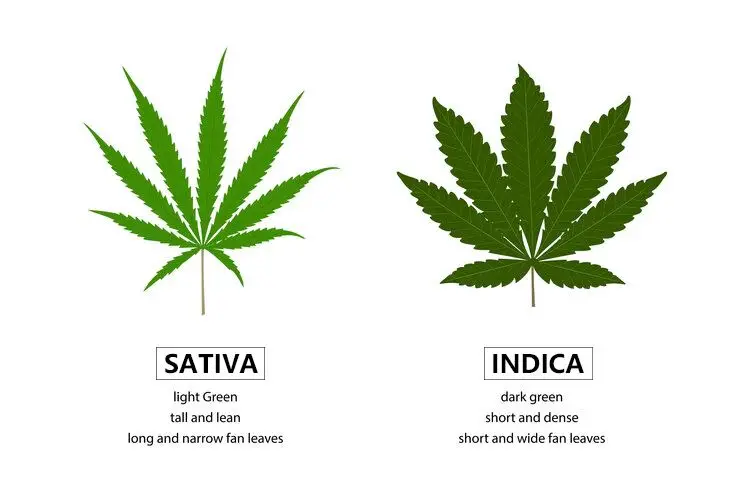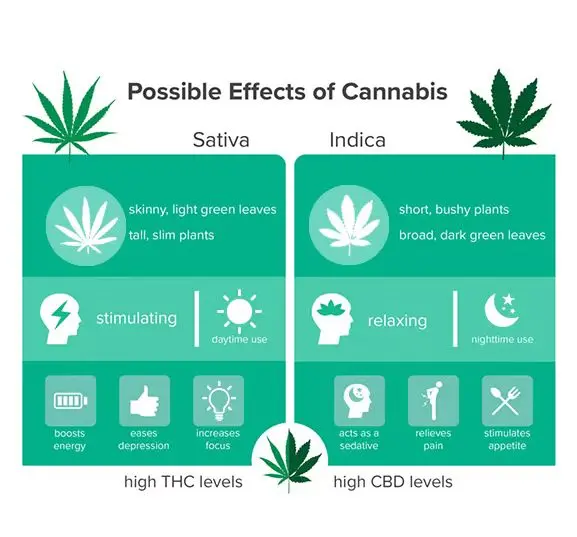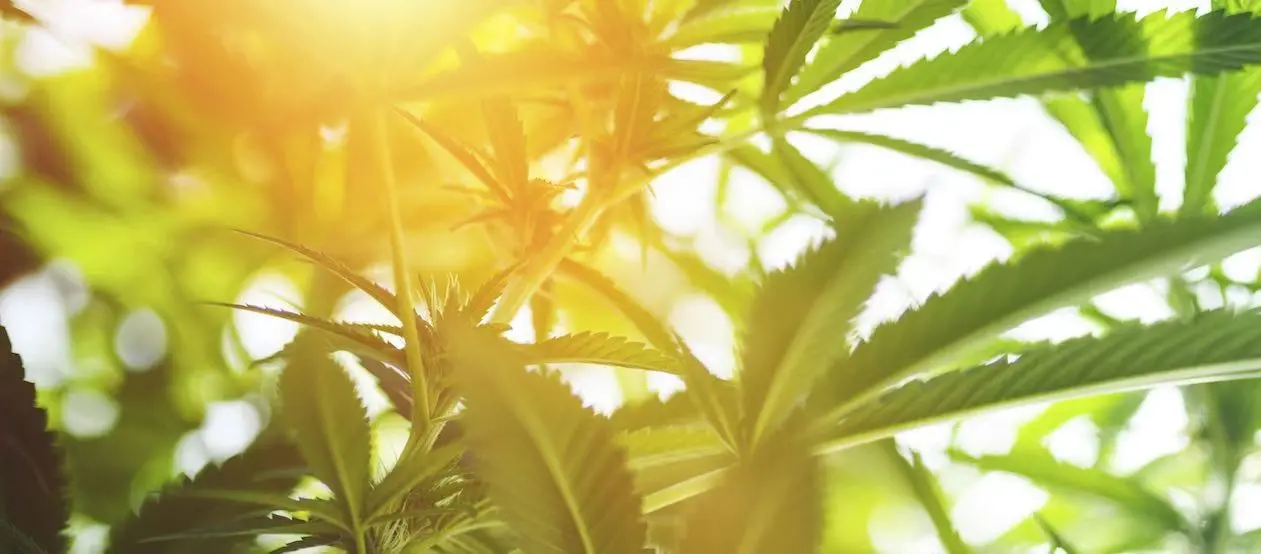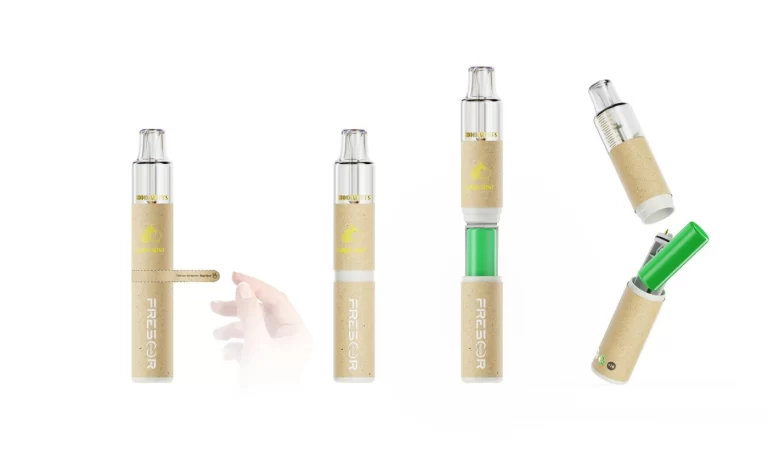While more than 1000 cannabis strains have been found during the past several decades, the two prevalent options patients can’t get enough of are Indica and Sativa. Both are commonly used and boast their range of effects on the mind and body, resulting in a myriad of medicinal benefits.
Indica provides a sense of deep body relaxation, while Sativa tends to offer a more energizing experience. Indica and Sativa plants not only differ in physiological effects but also their physical appearance.
New to the cannabis world and have no idea how to make the right choice? Here’s the comprehensive guide to Indica vs. Sativa that will walk you through the significant differences between these two cannabis strains.

- Origin
Cannabis Sativa is mainly found in hot, dry climates with long sunny days. This type of climate is generally available in Africa, Southeast Asia, Central America, and some portions of Western Asia. Hence, the central origin of Sativa is South America and Thailand.
The popular Sativa Strains are:
- Lemon ice
- Sage with THC 14.3%
However, Indica plants are adapted to the often harsh, turbulent, and dry climate of the Hindu Kush Mountains. Therefore, Cannabis Indica is native to India, Pakistan, Turkey, and Afghanistan.
The most popular Indica strains are:
- BlackJack with THC 19.39%
- Afghani with THC 17.8%
- Dominion Skunk with THC 15.7%
- Physical Appearance
Sativa and Indica look physically different from each other. While Indica plants are short and stocky, Sativa tends to be taller, skinnier, and even slim in appearance. The Indica leaves are broad and chunky, and the Sativa leaves, on the other hand, are thin and pointed.

- Medical Efficacy
Not just different physical appearances, both cannabis strains exhibit extremely opposite psychological effects. The Indica strain produces a relaxing effect that decreases energy while inducing sleep. But on the contrary, the Sativa strain is invigorating, enhances creativity, and improves focus.
Since Indica strains are used to relax patients to the point that they can barely get up from the couch, these are best consumed in the evening. They increase dopamine, which is a neurotransmitter that helps regulate pleasure in the brain.
On the other hand, Sativa strains increase alertness and mental activity, and hence, they should be consumed during the day when the user is alert and active. This strain causes a boost of serotonin that regulates sleep, appetite, and overall mood.
The differences in psychological effects of these strains arise due to the presence of two primary psychoactive ingredients, namely CBD and THC. Indica has higher CBD levels and low THC levels, resulting in more physical effects. Sativa is more elevated in THC but lower in CBD; hence, it has more mental effects that are thoroughly enjoyable.
- Aroma
The aroma differences mainly emerge from terpenes, which are molecules of the same class as THC and CBD. When it comes to aroma, Indica strains boast a musty, skunky, and earthy smell that makes you feel calm and relaxed.
Sativas, on the other hand, have a fruity and sweet odor that keeps you active while energizing your senses.
- Treatment of Medical Ailments
Since Indica and Sativa boast different psychological effects, they focus on treating specific ailments. Indica is an analgesic and anti-inflammatory, hence is used to treat arthritis, muscle tenderness, and widespread body pain.
The Indica strain is a fantastic natural remedy for motion sickness and a flu bug. It soothes the stomach while easing the symptoms of nausea. Many chemotherapy patients rely on Indica strains to help with nausea and morning sickness they experience after treatments.
Moreover, since Indica increases the dopamine levels in our body, it creates an effective sleep aid that works better than melatonin strips.
On the other hand, Sativa strain can manage psychological conditions, including depression, PTSD, and anxiety. This strain mainly boosts the serotonin levels that play a pivotal role in a person’s mood and mental outlook. In fact, several anti-depressants are formulated with Sativa strain that helps patients regain motivation.
In addition to this, Sativa strain can alleviate nasty side effects of long-term prescriptions. Glaucoma, spinal injuries, Crohn’s Disease, and Sciatica are some conditions that can be treated with Sativa.
Moreover, Sativa is well-known for improving your creativity and imagination without decreasing energy or motivation; hence a better choice if you’ve got a creative project.
- Market Availability of Indica and Sativa
Market availability is another major ground for comparing these two commonly used Cannabis strains. According to the studies, Sativas take a bit longer to grow than Indica strains; hence, they cannot get an equal market share.
While Indica strains mature in 6-8 weeks, Sativas take around 10-16 weeks to grow appropriately.
Moreover, Sativa strains yield far lesser medicine than their competitor subspecies and are expensive and rarely available.
Which Cannabis Strain is right for you?
Since you are now well-aware of both Indica and Sativa strains, it’s time to decide which is the right choice for you. There are several factors that you should consider while making a choice.
One of the most important is the THC and CBD content. Several reports suggest that high concentrations of THC will affect you much; hence you should go for the strain that boasts nearly the same ratio of CBD and THC.
The other factor is terpenes, which add an aroma to the strain. Knowing which terpene is present in a particular strain can help you choose the best option for your needs.
Last but not least, don’t forget to consider your medical ailment and body need before deciding. While Cannabis is a natural product, it can cause intense effects. So, before trying any strain, consider possible interaction with a doctor or other healthcare professional

Final Verdict
Choosing the right strain is vital to ensure that patients receive the best therapy possible. Hence, taking a strain that addresses the core ailment without producing any side effects is recommended.
Both strains are enriched with loads of medical benefits; therefore, you are advised to know their difference to determine what kind is best for you. When in doubt, go for a trial-and-error method to pinpoint your personal favorite.










